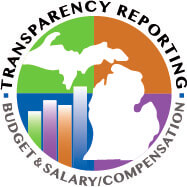If your child is breezing through middle school and you think he or she could benefit from being a bit more challenged, it may be time to consider high school courses. This option is becoming increasingly popular among high-achieving students who have their eye on college in the future. If you’re intrigued, read on to learn how taking high school courses in middle school can benefit your child, and how to tell if he or she is ready for this option.
How Advanced Courses Can Affect Your Child’s Future
If you’ve never considered the idea of your child taking high school courses in middle school, it’s probably because you’re not sure what the benefits are. After all, not every school even offers this option, so the perks are not yet widely known by most parents. However, if your child’s school allows this, it’s important to consider the advantages for your student.
Less Time in High School
The first benefit is that when your child receives credit for a high school course in middle school, that’s one less class he or she has to take to graduate from high school. Even if your middle schooler only takes one course early, the result is that he or she will have a shorter school day senior year.
This allows him or her the chance to relax, take more extracurriculars or get a part-time job to make money for college expenses. And of course, if your child takes a few high school classes in middle school, he or she may even be able to graduate from high school a full semester or year early and dually enroll in a college or university to earn college credit for free.
College Credit
When your child takes high school courses as a middle schooler, he or she gets some of the basic high school classes out of the way immediately. This leaves room for college-level courses during junior or senior year of high school. The result is that your child can either graduate from college early—saving a lot of time and money—or delve deeper than usual into a favorite subject once the core classes are completed.
For example, if your student takes Spanish I in middle school, he or she can move on to Spanish II upon entering high school. If your child wants to continue learning this language, he or she can go all the way up to Spanish IV or V — depending on what the high school offers — and even take the Spanish Advanced Placement (AP) test for college credit. If the student scores well on that, he or she may be able to take sophomore or junior level Spanish freshman year of college, and can essentially earn their Spanish minor or major in less time.
College Admissions
Even if your student is not interested in graduating from high school or college early, he or she can still benefit from taking high school courses in middle school. Studies show that taking challenging classes at a young age can improve the odds of getting into college.
More specifically, students who take algebra in eighth grade and geometry in ninth grade are more likely to attend college than those who don’t take those courses at that time. One study showed that of a group of low-income students, 71 percent who took geometry got into college, while only 26 percent of those who didn’t take geometry also went to college. So if college is on the radar for your child, taking advanced math in middle school is a good idea.
Is Your Child Prepared for Advanced Courses?
If you’re reading this, your child may have expressed an interest in taking high school courses in middle school. And that’s helpful, because interest is one of the most important factors of success here. In general, kids who are motivated do better than those who don’t want to be there.
At the same time, interest in advanced courses shouldn’t be the only determining factor. You should also make sure your child is academically ready for high school courses in middle school. In general, this means he or she should have good grades. Has your child mastered all of the objectives of 8th grade or is capable of testing out of them? Also, take your child’s schedule into consideration. If he or she is constantly busy with extracurricular activities, will there be time to handle the extra work of an advanced course? Finally, consider your child’s maturity. High school courses may require more thought, focus and time than middle school courses, so make sure your child is prepared to put in the effort at a young age.
How to Get Started
If you’ve considered all the above and think your child is ready for high school courses in middle school, the next step is contacting the school. Find out which courses students can take, and then make sure your child’s teachers and guidance counselor agree that he or she is ready. Finally, double check that your child is still interested in taking high school courses in middle school, since his or her desire and motivation will have a lot to do with the overall success.
If you’re interested in learning more about helping your child get ahead in school through a flexible learning environment, contact iCademy Global to learn more about our options.



